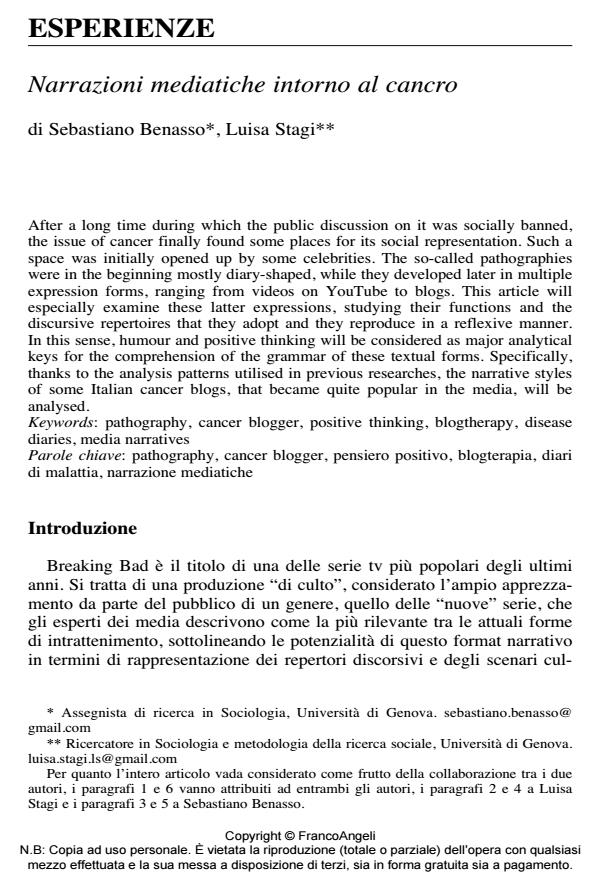Narrazioni mediatiche intorno al cancro
Titolo Rivista SALUTE E SOCIETÀ
Autori/Curatori Sebastiano Benasso, Luisa Stagi
Anno di pubblicazione 2015 Fascicolo 2015/2
Lingua Italiano Numero pagine 16 P. 127-142 Dimensione file 88 KB
DOI 10.3280/SES2015-002010
Il DOI è il codice a barre della proprietà intellettuale: per saperne di più
clicca qui
Qui sotto puoi vedere in anteprima la prima pagina di questo articolo.
Se questo articolo ti interessa, lo puoi acquistare (e scaricare in formato pdf) seguendo le facili indicazioni per acquistare il download credit. Acquista Download Credits per scaricare questo Articolo in formato PDF

FrancoAngeli è membro della Publishers International Linking Association, Inc (PILA)associazione indipendente e non profit per facilitare (attraverso i servizi tecnologici implementati da CrossRef.org) l’accesso degli studiosi ai contenuti digitali nelle pubblicazioni professionali e scientifiche
After a long time during which the public discussion on it was socially banned, the issue of cancer finally found some places for its social representation. Such a space was initially opened up by some celebrities. The so-called pathographies were in the beginning mostly diary-shaped, while they developed later in multiple expression forms, ranging from videos on YouTube to blogs. This article will especially examine these latter expressions, studying their functions and the discursive repertoires that they adopt and they reproduce in a reflexive manner. In this sense, humour and positive thinking will be considered as major analytical keys for the comprehension of the grammar of these textual forms. Specifically, thanks to the analysis patterns utilised in previous researches, the narrative styles of some Italian cancer blogs, that became quite popular in the media, will be analysed.
Parole chiave:Pathography, cancer blogger, pensiero positivo, blogterapia, diari di malattia, narrazione mediatiche
Sebastiano Benasso, Luisa Stagi, Narrazioni mediatiche intorno al cancro in "SALUTE E SOCIETÀ" 2/2015, pp 127-142, DOI: 10.3280/SES2015-002010